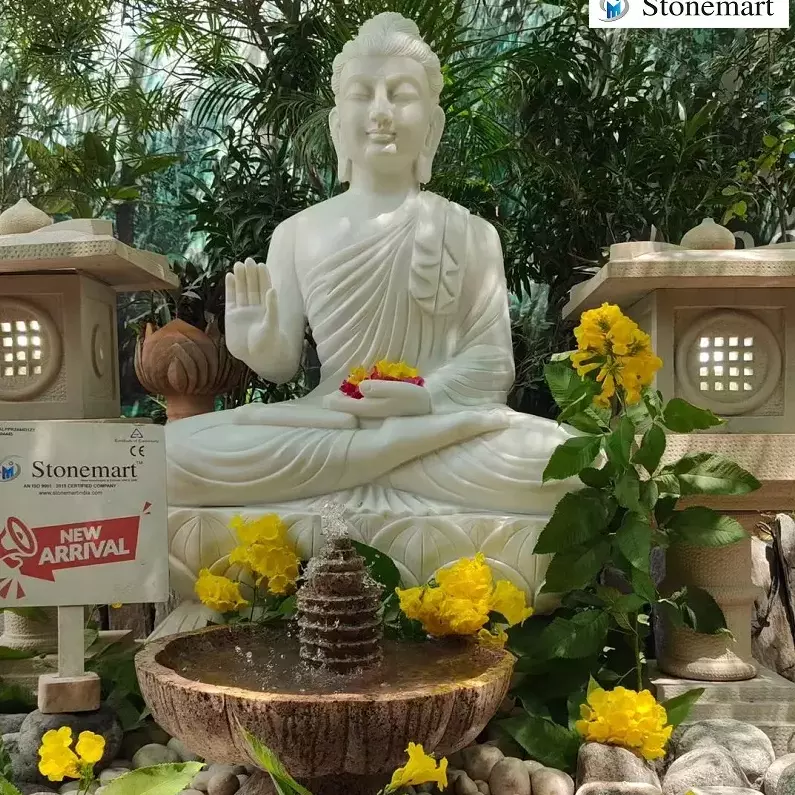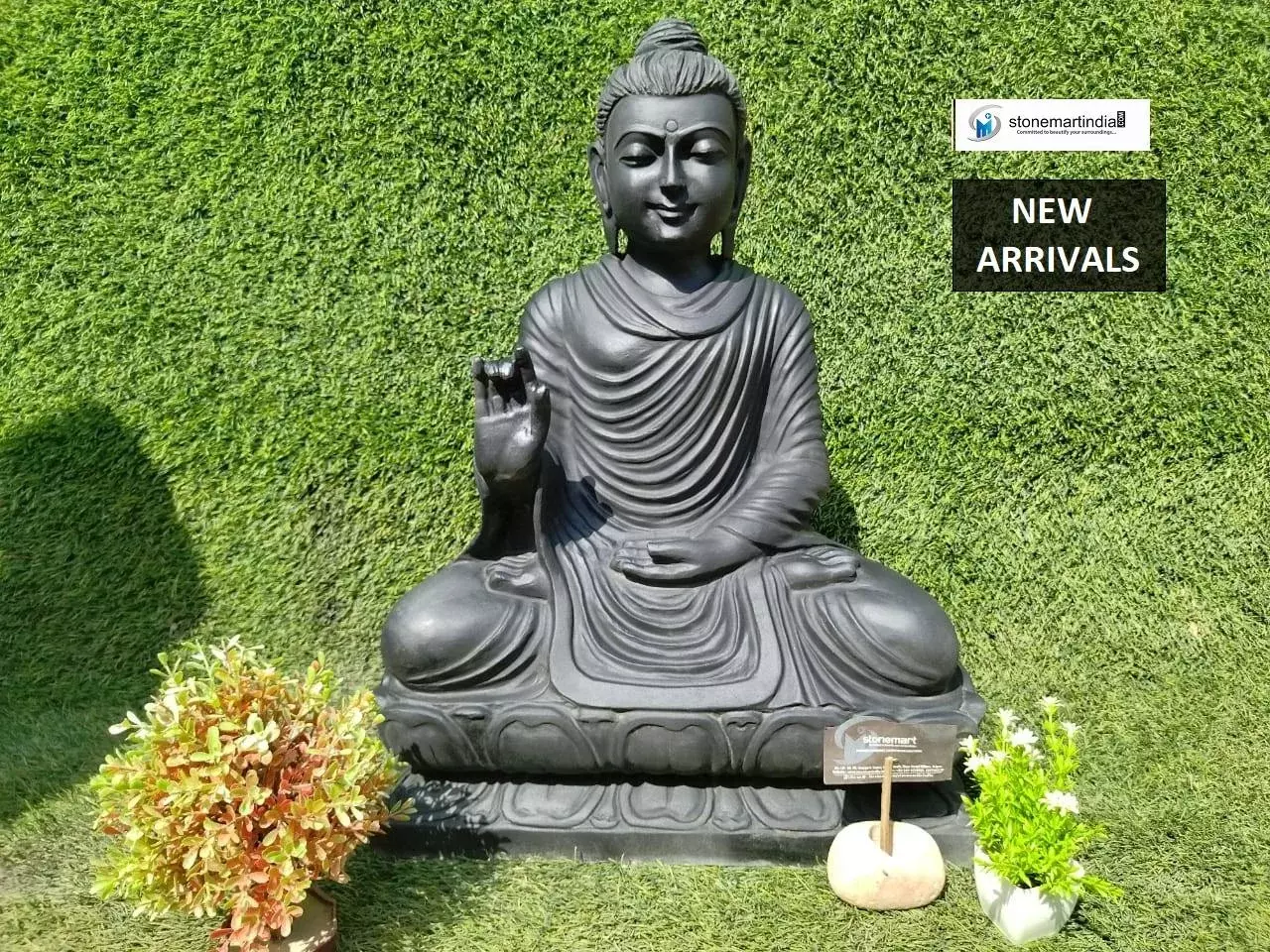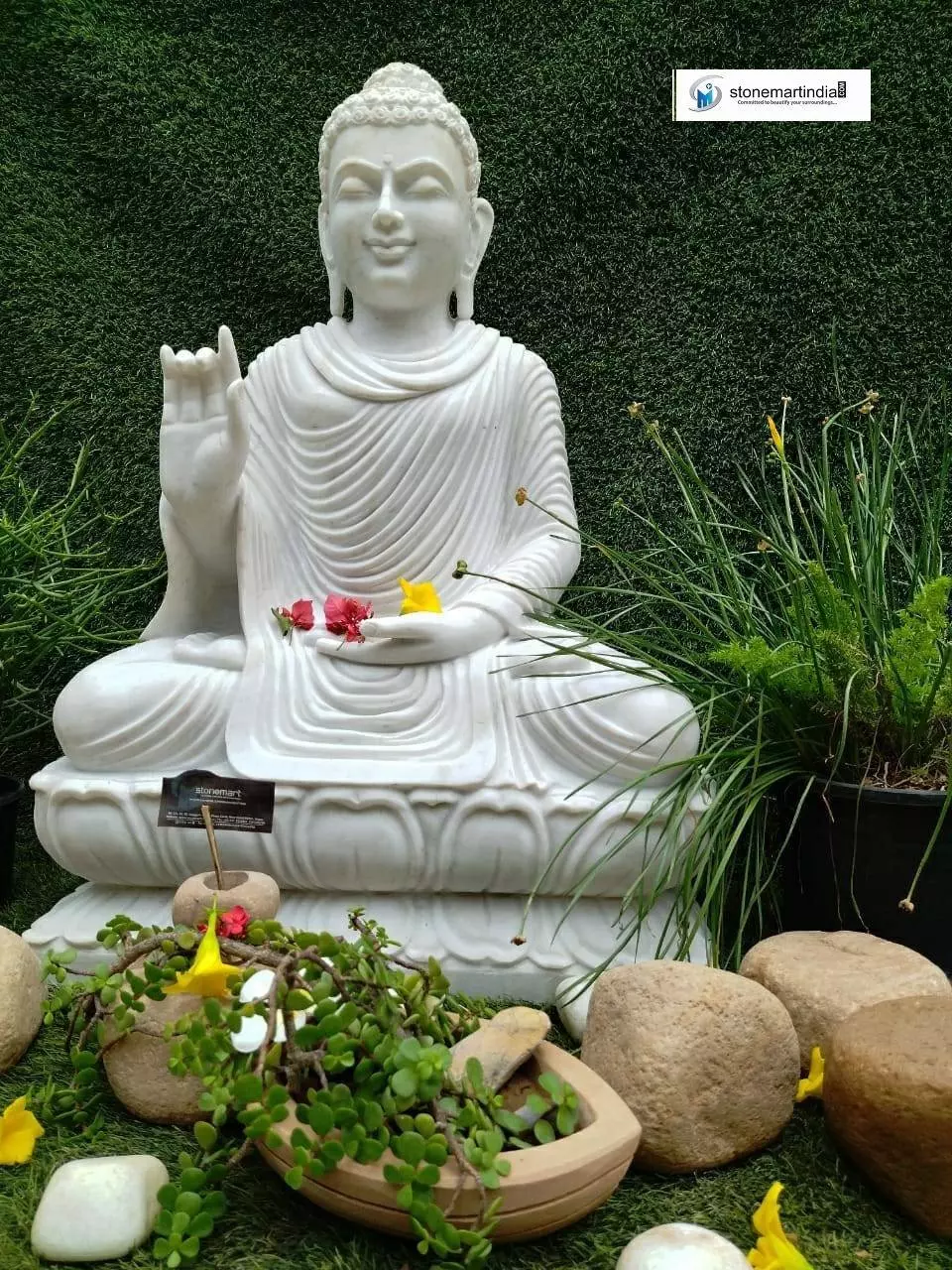
Whether we are consecrating the Buddha statue for home, office, monastery or any other social or commercial premises, our normal belief surrounds an icon of peace, benevolence, and harmony. But when we look at other major forms of Gautama Buddha, then we would find that the lord also bestows his pupils with fearlessness, courage, and protection. It is one of the iconic and most famous Gautam Buddha statues and termed as the lord to be in his abhaya mudra form.
Abhaya mudra of the lord symbolises the gesture of fearlessness and one can identify the posture by the Buddha extending out the palm of his right hand in the outward direction to the chest level or a bit higher. The gesture showcases an uninterrupted flow of energy for protection and peace from divinity. It provides a sense of internal security and widely regarded as one of the most invaluable additions to the Feng Shui home collection. There are certain specifications related to the consecration (prana pratishta) of an abhaya mudra Buddha statue, which we are going to discuss in the latter part of this blog.
The History of the Origin of Abhaya Mudra Form in Buddhism
As per the scriptures of Theravada Buddhism, there are certain reasons due to which the posture is made by the lord by raising the right hand to the shoulder height, with the arm bent and the palm facing towards the outward direction with fingers upright and adjoined with one another. The left hand of the statue hangs down with the body standing in erect posture. As per the religious and spiritual culture of Thailand and Laos, abhaya mudra is associated with the walking form of Buddha. Here, both the hands of the lord are erected in uniform style to symbolise a double abhaya mudra.

The history of this mudra prior to the onset of Buddhism tends to be used as a gesture of good intentions with the proposal of friendship to the strangers while approaching. In accordance to the Gandhara art, it indicates the action of preaching. The mudra was also quite common in China amid the Sui and Wei eras of the 7th and 4th centuries respectively.
As per the Buddhism followed in the Japanese culture, the abhaya mudra of the lord is portrayed with the middle finger being projected in a slightly forward direction, considering it as a symbolic representation of the Shingon sect. The left hand of the lord remains in dhyana mudra, while all the fingers of the right hand are to be pointing out towards the heavens. The right hand stays adjacent to the chest or shoulder level.
The Origin Story from the Buddhist Manuscripts of India
The gesture became an integral part of the Buddhist manuscripts after an incident that took place with the Buddha in which he was attacked by an elephant. The lord used this mudra to subdue the gentle giant as one can find in various frescoes and scripts. As per Mahayana Buddhism, some of the northern schools’ deities were often paired with different mudra with the help of the other hand.
As per the Indian legend, the mudra originated from a story where out of jealousy, Devdutta, the cousin of Siddhartha Gautama devised a plot to kill him. He brought a rampaging elephant to the premise where Siddhartha was wandering. When out of fury, the elephant charged towards him, he performed abhaya mudra. After watching him in this unique mudra, the elephant halted his charge and calmed down before Siddhartha Gautama.
The most unique power of abhaya mudra is that it helps dispel the fear even before it approaches near the acquiring one. The mudra is known for commanding respect from the opponent with sheer display of might, knowledge, and confidence. The posture is a method of communication between two unarmed individuals to consolidate a relationship of welfare for each other or for the entire sentient race.

The Ideal Placement of Abhaya mudra Buddha Statue for Positive Outcome
Abhaya mudra stone carved Buddha statue is related to the notion of a fierce compassion. The most ideal place to conduct the prana pratistha of your ordered Abhaya mudra Buddha is at the main entrance of your home or the concerned living room. The statue would bring a positive outcome in the form of strengthening your boundaries, as well as filling your heart with confidence. These boundaries are associated with the elements of earth. The mudra is widely regarded as the most fearless form of the Buddha and help you engage in the materialistic actions of the world with utmost assurance and authority.
We recommend you make a visit on Buddha statues for interior décor and witness the widest range of abhaya mudra Buddha statue for sale. Avail accessibility to the most authentic quality online at extremely fair and transparent local/international prices.
